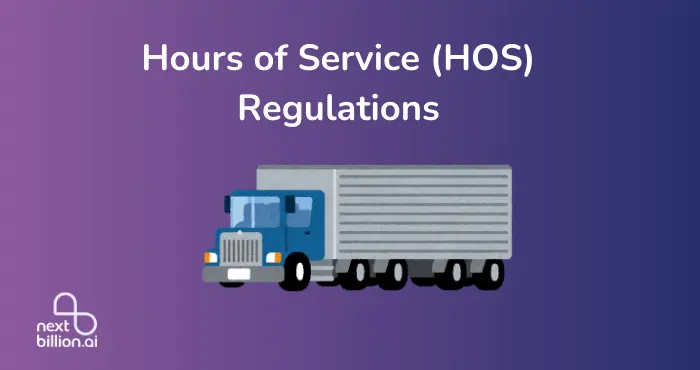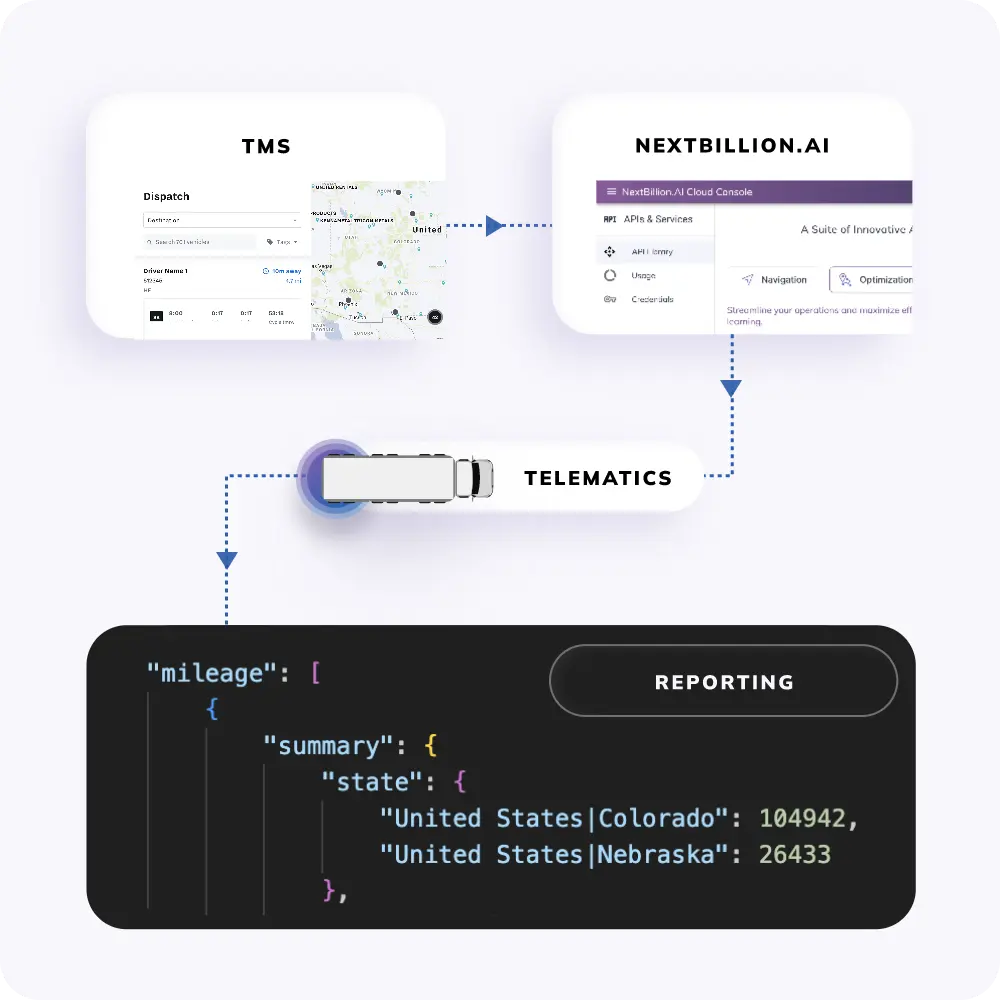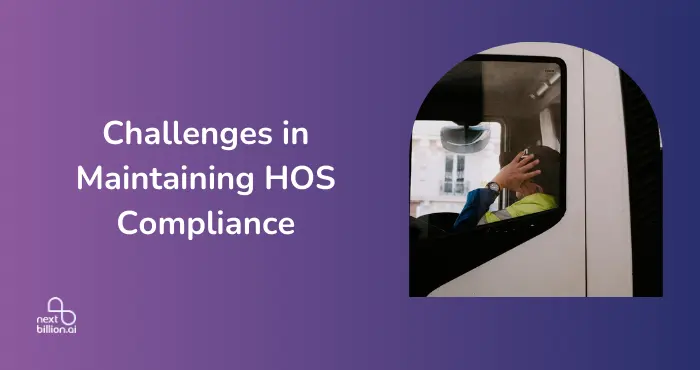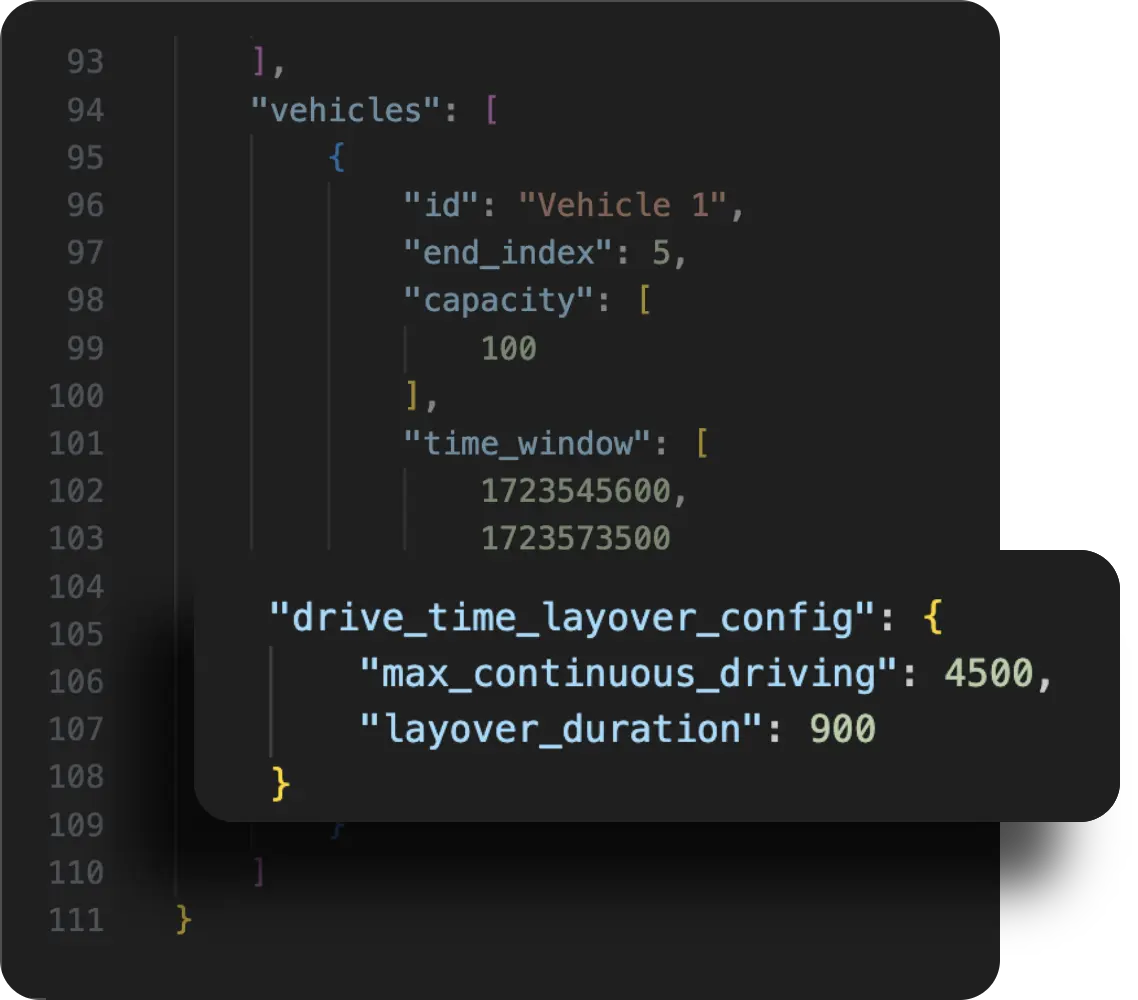
Table of Contents
When we think about trucking, we often focus on the long hauls, tight schedules, and the critical role drivers play in keeping goods moving. However, behind the scenes, there’s a set of rules that dictate how long a driver can be on the road: the Hours of Service (HOS) regulations. These rules are designed to prevent fatigue-related accidents, but they also bring challenges that impact everything from route planning to driver well-being.
In this article, I will dive into how HOS regulations shape the trucking industry and what that means for everyone on the road.
What Are Hours of Service (HOS) Regulations?

Hours of Service (HOS) regulations are rules that limit how many hours truck drivers can work. These rules are designed to keep drivers from getting too tired, which helps prevent accidents.
Here’s a simple breakdown:
Driving Time: Drivers can only drive for a certain number of hours before they must take a break. For example, they might be allowed to drive for up to 11 hours, but only after they’ve had at least 10 hours off to rest.
On-Duty Time: This includes not just driving but also other work-related tasks like loading or unloading cargo. There’s a limit to how many hours a driver can be on duty in a day, typically 14 hours, after which they must stop working and rest.
Breaks: Drivers must take a 30-minute break after driving for 8 hours.
Weekly Limits: There are also limits on how many hours drivers can work in a week. After hitting this limit, they must take a longer break, usually 34 hours, before starting a new workweek.
These rules ensure that drivers get enough rest, stay alert, and keep the roads safer for everyone.
History and Evolution
The Hours of Service (HOS) regulations were first introduced in 1937 by the now-defunct Interstate Commerce Commission (ICC) to protect the safety of long-haul truckers by preventing accidents caused by driver fatigue. These rules limit the number of hours a truck driver can work each day and week, including time spent on driving, loading, unloading, and other related duties.
The goal is to keep drivers on a 21-to-24-hour schedule, which aligns with the body’s natural sleep-wake cycle (circadian rhythm). This helps reduce fatigue and ensures drivers get enough rest to avoid accidents.
Despite their safety intentions, HOS regulations have been controversial. Policymakers have struggled to find the right balance between driver safety and operational efficiency. From 1962 to 2009, numerous proposals to amend HOS regulations were made, but many were not finalized due to debates about their effectiveness.
One significant update came in 2003 when the Federal Motor Carrier Safety Administration (FMCSA) introduced new HOS rules, increasing the opportunity for drivers to get more restorative sleep by adding two hours of off-duty time. However, these rules have faced both support and criticism. For example, the 2003 rules allowed drivers to drive up to 11 hours after 10 consecutive hours off duty but prohibited driving beyond the 14th hour after coming on duty.
In 2008, the HOS rules were refined to require commercial motor vehicle (CMV) drivers to take at least eight consecutive hours in the sleeper berth, plus two consecutive hours off-duty, in the sleeper berth, or a combination of the two.
While some groups advocate for maintaining the status quo or legislating the 2008 rules, others push for stricter controls, arguing that allowing drivers more than 10 hours behind the wheel endangers public safety.
Recent Changes in Hours-of-Service (HOS) Rules
Understanding the recent changes in Hours-of-Service (HOS) regulations is crucial for both truck drivers and fleet managers. These rules dictate how long-haul drivers can be on the road, how much rest they need, and how their work schedules should be structured to maintain safety.
Below is a summary of the key points regarding the most recent updates to the HOS rules:
Driving Limits
11-Hour Driving Limit: Drivers are still allowed to drive for a maximum of 11 hours, but only after taking 10 consecutive hours off duty. This rule ensures that drivers get enough rest before getting back on the road.
14-Hour Work Limit: Drivers cannot operate their vehicles after the 14th hour of coming on duty, following 10 consecutive hours off duty. This limit includes driving and any other work-related tasks, such as loading or unloading.
Weekly On-Duty Limits
60/70-Hour Rule: Drivers are not allowed to drive after being on duty for 60 hours in a 7-day period if their company does not operate commercial vehicles every day. For companies that do operate daily, the limit is 70 hours in an 8-day period.
34-Hour Restart: Drivers must take a break of at least 34 consecutive hours to reset their weekly work hours. This restart rule allows drivers to start a new 7—or 8-day period of work.
Special Considerations for Local Drivers
14/16-Hour Rule for Short-Haul Drivers: Drivers who operate within a 150-mile radius of their reporting location have slightly different rules. They may not drive after the 14th hour of coming on duty five days a week or after the 16th hour 2 days a week. This exception provides more flexibility for drivers with short-haul routes.
Sleeper Berth Provisions
Split Sleeper Berth Time: Drivers must take at least 10 hours off duty using the sleeper berth provision. However, this time can be split into two periods, provided neither is less than 2 hours. Additionally, drivers must spend at least eight consecutive hours in the sleeper berth, with the remaining 2 hours taken either in the sleeper berth, off duty or a combination of the two. This change aims to offer flexibility while ensuring drivers get the necessary rest.
It’s important to note that these rules primarily apply to drivers operating commercial motor vehicles (CMVs). Passenger-carrying drivers follow different HOS limitations under 49 CFR 395.5.
These recent changes in HOS regulations continue to emphasize safety while providing flexibility for different operations.
Overview of Current HOS Rules
The Hours of Service (HOS) regulations are designed to ensure that truck drivers remain alert and well-rested, reducing the likelihood of accidents caused by fatigue. These rules set clear limits on driving hours, work periods, and required rest breaks.
Here is an overview of the current HOS rules in place:
1. Maximum Driving Hours
11-Hour Driving Limit: Drivers are allowed to drive for up to 11 hours in a workday, but only after taking at least 10 consecutive hours off duty. This rule ensures that drivers have had sufficient rest before beginning a long driving shift.
Example: Imagine a driver who starts their day at 7:00 AM after taking 10 hours off. They can drive until 6:00 PM (11 hours of driving), but they cannot extend their driving beyond this limit, even if they feel alert. Once they hit the 11-hour mark, they must stop driving and take another break.
2. 14-Hour Duty Window
14-Hour Work Limit: The 14-hour duty window begins as soon as the driver starts any work-related activity, not just driving. This window includes both driving time and other tasks like loading, unloading, or conducting vehicle inspections. After this 14-hour period, the driver cannot continue working, regardless of how much driving they have done.
Example: If a driver starts their workday at 6:00 AM, their 14-hour window closes at 8:00 PM. Even if they’ve only driven for 8 of those hours, they must stop all work-related activities after 8:00 PM and take at least 10 hours off before starting a new workday.
3. Mandatory Rest Breaks
30-Minute Rest Break: After driving for 8 hours, drivers are required to take a 30-minute break. This break is mandatory to ensure that drivers take a moment to rest and recharge before continuing their journey. The break can be taken off duty, in the sleeper berth, or as a combination of both.
Example: If a driver starts driving at 8:00 AM, they need to take a 30-minute break by 4:00 PM at the latest, assuming they’ve been driving continuously. If they’ve driven 6 hours, taken a break, and then driven another 2 hours, they would need to take another break after reaching 8 hours of driving time.
4. 60/70-Hour Weekly On-Duty Limit
60/70-Hour Rule: This rule limits the total number of hours a driver can be on duty over a period of 7 or 8 consecutive days. If a trucking company operates every day of the week, drivers can be on duty for up to 70 hours in 8 days. For companies that do not operate daily, the limit is 60 hours in 7 days. After reaching these limits, drivers must take a break before starting a new cycle.
Example: A driver works for a company that operates 7 days a week. Over 8 days, they log 68 hours of on-duty time. If they then work a 3-hour shift, they reach the 70-hour limit and must take a break of at least 34 consecutive hours before they can begin another 8-day period.
5. 34-Hour Reset Period
34-Hour Restart: This rule allows drivers to reset their weekly on-duty clock after taking a 34-hour off-duty break. This means that after reaching the 60/70-hour limit, drivers can take a 34-hour break and start a new workweek with a fresh 60 or 70 hours available.
Example: A driver reaches the 70-hour limit on a Friday evening. If they take a break from Friday at 8:00 PM until Sunday at 6:00 AM (34 hours), they can start driving again on Sunday with a new 70-hour limit for the next 8 days.
6. Sleeper Berth Provision
Split Rest Periods: Drivers using the sleeper berth provision can split their 10-hour off-duty period into two segments. One segment must be at least 8 consecutive hours in the sleeper berth, and the other must be at least 2 consecutive hours, which can be taken off duty, in the sleeper berth, or as a combination.
Example: A driver decides to take a break after 6 hours of driving and spends 8 hours in the sleeper berth. They then drive for another 3 hours and take a 2-hour off-duty break. This split rest arrangement allows them to stay compliant with the HOS rules while maximizing their driving time.
7. Short-Haul Exception
Short-Haul Exception: Drivers who operate within a 150-mile radius of their work reporting location have slightly more flexibility. They are allowed to extend their workday up to 16 hours twice a week, as long as they still meet the other HOS requirements.
Example: A driver who delivers goods locally within a 150-mile radius starts their day at 6:00 AM. On a busy day, they might work until 10:00 PM (16 hours), which is allowed under the short-haul exception. However, this extended workday can only happen twice in a week, and they must take at least 10 hours off before the next workday.
By following these guidelines, drivers can reduce the risk of fatigue-related accidents and stay compliant with federal regulations.
Impact of HOS Regulations on Truck Drivers
HOS regulations affect the truck drivers in the following ways:
Daily Routines
HOS regulations significantly impact truck drivers’ daily schedules. These rules dictate when drivers can start their day, how long they can stay on the road, and when they must take breaks. For many drivers, this means carefully planning their routes and schedules to ensure they remain compliant while still meeting delivery deadlines. The 14-hour duty window, for example, requires drivers to be strategic about how they spend their time, balancing driving, loading, unloading, and rest periods.
Stress and Fatigue Management
Managing stress and fatigue is a constant challenge for truck drivers, especially within the constraints of HOS regulations. While these rules are designed to prevent excessive fatigue, they also place pressure on drivers to complete their routes within a limited time.
Income and Job Satisfaction
HOS rules can also influence a driver’s earnings and overall job satisfaction. On one hand, these regulations can limit the number of hours a driver can work, potentially reducing their income if they are paid by the mile or hour.
On the other hand, by promoting a healthier work-life balance, HOS rules can lead to improved job satisfaction and long-term well-being. Drivers who adhere to these regulations may find that they experience less burnout and are able to maintain their careers for longer.
Overall, while HOS regulations impose certain limitations, they also provide essential protections that help drivers manage their workload, maintain their health, and achieve a more sustainable career in the long term.
Why HOS Regulations are Important?
Hours of Service (HOS) regulations are more than just guidelines—they are crucial safeguards that impact every aspect of the trucking industry. From enhancing road safety to protecting drivers’ health and minimizing legal risks, these rules play a vital role in ensuring commercial transportation’s smooth and secure operation.
Safety Concerns
HOS regulations are primarily designed to reduce the risk of accidents caused by driver fatigue, a major concern in the trucking industry. Fatigue can significantly impair a driver’s reaction time, decision-making, and overall alertness, leading to potentially catastrophic accidents. By setting clear limits on driving hours and mandating rest breaks, HOS regulations ensure that drivers have enough time to rest and recover before hitting the road again. This approach directly addresses the root cause of many trucking accidents, helping to protect both the drivers and the general public.
Health Implications
Beyond safety, HOS regulations play a crucial role in safeguarding the health and well-being of truck drivers. Long hours behind the wheel, coupled with irregular sleep patterns, can lead to chronic health issues such as sleep disorders, cardiovascular problems, and mental fatigue. By ensuring that drivers take regular rest breaks and have sufficient off-duty time, these regulations help drivers maintain a healthier work-life balance, reducing the risk of long-term health problems.
Legal and Financial Risks
Non-compliance with HOS regulations can lead to serious legal and financial consequences for both drivers and trucking companies. Violations can result in hefty fines, penalties, and even suspension of a driver’s commercial license.
For companies, repeated violations can lead to increased scrutiny from regulatory agencies, higher insurance premiums, and potential lawsuits in the event of an accident. Compliance with HOS rules not only helps avoid these risks but also contributes to a company’s reputation for safety and reliability.
By adhering to HOS regulations, drivers and companies can avoid these pitfalls, ensuring safer roads and a more sustainable business model.
Challenges in Maintaining HOS Compliance During Route Planning
Maintaining compliance with Hours of Service (HOS) regulations during the route planning process presents several challenges for trucking companies. These regulations are crucial for ensuring driver safety and reducing the risk of accidents caused by fatigue, but they also add layers of complexity to route planning. Here are some of the key challenges companies face when trying to stay compliant with HOS rules:
Balancing Efficiency with Compliance
One of the most significant challenges is finding the right balance between route efficiency and HOS compliance. Companies aim to minimize delivery times and reduce costs, but they must also adhere to strict HOS regulations, such as limits on driving hours and mandatory rest breaks. This balancing act can be difficult, especially when trying to meet tight delivery deadlines.
Handling Unforeseen Delays
Unforeseen delays, such as traffic congestion, road closures, or unexpected loading/unloading times, can throw off even the best-laid plans. These delays can lead to situations where drivers are at risk of exceeding their allowed driving hours, creating compliance issues that can result in fines or penalties.
Complex Regulations Across Jurisdictions
HOS regulations can vary slightly across different regions or countries, adding another layer of complexity for companies operating in multiple areas. Understanding and applying these nuanced differences can be difficult, especially when planning cross-border routes or managing a diverse fleet of drivers with different operating schedules.
A company operating in both the U.S. and Canada must navigate different HOS regulations, such as varying driving hour limits and rest requirements. This complexity requires careful planning and a deep understanding of the rules in each jurisdiction, which can be time-consuming and prone to errors.
Driver Fatigue and Route Adjustments
Even with compliant route planning, managing driver fatigue remains a challenge. Drivers may experience fatigue differently, depending on factors like their sleep quality, health, and personal circumstances. Adjusting routes to accommodate these individual differences while maintaining compliance adds another layer of difficulty.
A driver may feel fatigued sooner than anticipated due to a poor night’s sleep, even though the route was planned within HOS limits. In such cases, the company may need to adjust the route on the fly, considering both the driver’s well-being and the regulatory requirements, which can be challenging without flexible planning tools.
Monitoring and Documentation
Maintaining accurate records and documentation of HOS compliance is crucial for audit purposes and to avoid penalties. However, this can be a daunting task, especially for large fleets with numerous drivers and routes. Ensuring that all driving hours, breaks, and rest periods are correctly logged and reported requires robust systems and constant monitoring.
A company must keep detailed logs of each driver’s activities, including start and stop times, break durations, and rest periods. Any discrepancies or missed entries can lead to compliance issues, making it essential to have reliable tracking and documentation tools in place.
Navigating the challenges of maintaining HOS compliance during the route planning process requires a careful balance of efficiency, flexibility, and attention to detail. Companies must be equipped with advanced route planning tools that can handle real-time adjustments, monitor compliance across jurisdictions, and support the overall safety and well-being of their drivers.

Manually planning routes while ensuring compliance with Hours of Service (HOS) regulations can be challenging and time-consuming. To simplify this process, NextBillion.ai offers advanced route planning capabilities through its Route Optimization API, which can seamlessly integrate into a trucking company’s workflow.
This API provides various truck routing parameters that make it easier to plan routes that comply with HOS regulations, helping companies avoid legal issues and ensuring driver safety.
Here’s how the key parameters offered by NextBillion.ai’s API can help trucking companies plan HOS-compliant routes:
Drive Time Layover Configuration (drive_time_layover_config)
The drive_time_layover_config parameter is designed to help manage continuous driving time and enforce mandatory rest breaks. This parameter allows companies to define the maximum time a driver can stay on the road without taking a break (max_continuous_driving) and specify the required rest duration (layover_duration) once this limit is reached.
Example: If a company sets max_continuous_driving to 3600 seconds (1 hour) and layover_duration to 600 seconds (10 minutes), the API ensures that drivers stop after every hour of driving for a 10-minute break. This automatic enforcement of breaks helps prevent driver fatigue and ensures compliance with HOS rules, which are essential for safe operations.
Maximum Travel Time (max_travel_time)
The max_travel_time parameter allows companies to set a limit on the total driving time for a route. This constraint ensures that drivers do not exceed the allowable driving hours within a duty period, keeping them within HOS regulations.
Example: If a route is planned with a max_travel_time of 8 hours, the API will calculate the route accordingly, excluding any waiting or service time from this duration. This parameter helps ensure that drivers stay within their daily driving limits, reducing the risk of violations and enhancing safety.
Break Scheduling (break)
The break attribute is used to schedule mandatory breaks during the driver’s route. This parameter allows companies to define specific time windows during which breaks can be taken, ensuring that drivers have adequate rest periods as required by HOS regulations.
Example: Suppose a trucking company wants to ensure that drivers take a lunch break between 12:00 PM and 1:00 PM. The API can be configured with a break parameter that specifies this time window, along with the break duration, such as 900 seconds (15 minutes). The route will then be planned to include this break, keeping the driver in compliance with HOS rules.
By using these parameters, trucking companies can automate the complex process of planning HOS-compliant routes. The API takes into account all necessary constraints—such as driving time limits, mandatory rest periods, and break schedules—ensuring that each route meets regulatory requirements. This not only helps avoid costly HOS violations but also promotes driver safety and well-being by preventing fatigue.
Overcome HOS Compliance Challenges with NextBillion.ai

Using an advanced route planning tool like NextBillion.ai allows companies to optimize routes for efficiency while staying within legal limits. The ability to automatically adjust routes based on HOS constraints means that companies can maintain high levels of productivity without compromising compliance or safety.
Integrating HOS compliance into the route planning process through NextBillion.ai’s Route Optimization API enables trucking companies to streamline their operations, reduce legal risks, and support the health and safety of their drivers.
About Author
Shivangi Singh
Shivangi is a seasoned Technical Writer with a passion for simplifying technical concepts. With over 5 years of experience, she specializes in crafting clear and concise documentation for various technical products and platforms.











